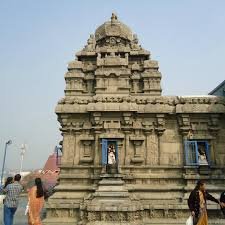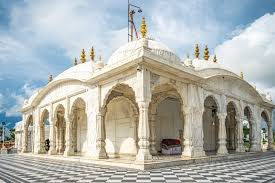Introduction
Nestled atop a small hill in the heart of Delhi, the Uttara Swamimalai Temple, also known as Malai Mandir, is a sacred shrine dedicated to Lord Murugan. This temple is an important place of worship for Tamil, Kannada, Telugu, and Malayali communities residing in the capital.
Built in traditional Dravidian style, Malai Mandir is not just an architectural marvel but also a serene spiritual retreat amid the bustling city. Whether you are a devotee, a cultural enthusiast, or a traveler exploring Delhi’s religious landmarks, a visit to this temple is sure to leave you mesmerized.
Historical Significance of Uttara Swamimalai Temple
A Temple Built on Devotion
The foundation of Malai Mandir was laid in 1965 by devotees who wanted a place to worship Lord Murugan in North India. With the support of the Tamil community and religious organizations, the temple was completed and consecrated in 1973.
Since then, it has become a major center of South Indian religious and cultural activities in Delhi. The temple stands as a testament to the deep devotion of the community, preserving their faith and traditions far from their homeland.
Why is Lord Murugan Worshipped Here?
Lord Murugan, also known as Kartikeya, Skanda, or Subramanya, is revered as the Commander of the Celestial Army and the Son of Lord Shiva and Goddess Parvati. He symbolizes wisdom, valor, and divine protection. Many devotees, especially from South India, worship Lord Murugan to seek strength, knowledge, and victory over obstacles.
Architectural Marvel of Malai Mandir
Inspired by South Indian Temple Architecture
The Uttara Swamimalai Temple is a magnificent example of Dravidian architecture, reminiscent of the famous Murugan temples in Tamil Nadu, such as Tiruchendur, Palani, and Thiruthani.
Key Architectural Highlights
- Temple on a Hill (Malai Mandir)
- The temple is located on a small hill, symbolizing Lord Murugan’s connection with hills and mountains, as seen in South Indian temples like Pazhani and Swamimalai.
- The steps leading up to the temple create a feeling of embarking on a spiritual journey.
- Magnificent Gopuram (Towering Entrance Gate)
- The entrance of the temple features a beautifully sculpted gopuram, adorned with intricate carvings of Hindu deities and celestial beings.
- The detailed craftsmanship reflects the rich South Indian temple traditions.
- Sanctum Sanctorum (Garbhagriha)
- The main sanctum houses a majestic idol of Lord Murugan, depicted holding his divine spear (Vel), radiating peace and strength.
- The sanctum follows Agama Shastra, the traditional Hindu architectural scriptures.
- Separate Shrines for Other Deities
- Apart from Lord Murugan, the temple also has shrines dedicated to Lord Ganesha, Lord Shiva, Goddess Parvati, and Navagrahas (Nine Planets).
- Each shrine follows South Indian temple traditions, with priests performing daily pujas and rituals.
- Golden Dhwaja Stambha (Flagpole)
- A gold-plated flagpole (Dhwaja Stambha) stands in front of the sanctum, a common feature in Murugan temples.
Rituals and Worship Practices at Malai Mandir
Daily Temple Rituals
The temple follows strict South Indian worship traditions, with priests from Tamil Nadu performing elaborate rituals. Devotees visit the temple to offer prayers, light lamps, and seek Lord Murugan’s blessings.
- Morning Puja (Suprabhatham): Begins at 5:30 AM with the chanting of Vedic hymns.
- Abhishekam (Sacred Bathing Ceremony): The deity is bathed with milk, honey, sandalwood paste, and holy water, symbolizing purification.
- Prasadam Offering: Devotees receive sacred food offerings like panchamrit (a mixture of milk, honey, ghee, curd, and sugar).
Special Pujas and Festivals
Thaipusam: The Most Grand Festival
- Celebrated in January or February, Thaipusam is one of the most significant festivals dedicated to Lord Murugan.
- Devotees carry kavadi (wooden structures with offerings) as an act of devotion and gratitude.
Skanda Sashti (Victory of Murugan over Evil)
- Celebrated in October or November, Skanda Sashti marks Lord Murugan’s triumph over the demon Surapadman.
- Devotees observe fasting, special prayers, and processions.
Why You Should Visit Malai Mandir
A Spiritual and Cultural Experience
- Serene Atmosphere Amidst the City
- The peaceful hilltop location makes it an ideal place for meditation and worship.
- Authentic South Indian Temple Rituals
- Devotees experience traditional Tamil-style pujas, hymns, and temple customs.
- A Divine Connection with Lord Murugan
- Many devotees believe praying at Malai Mandir removes obstacles, brings wisdom, and grants success.
- Architectural Beauty and Sacred Vibes
- The temple is a visual delight, capturing the essence of South Indian temple art and traditions.
- Major Festival Celebrations
- Participating in Thaipusam and Skanda Sashti here is an unforgettable spiritual experience.
How to Reach Uttara Swamimalai Temple
- Location: Palam Marg, Sector 7, RK Puram, New Delhi
- Nearest Metro Station: RK Puram (Pink Line) or Vasant Vihar (Magenta Line)
- By Road: Easily accessible by auto, taxi, or bus from major parts of Delhi
Temple Timings and Entry Fee
- Entry Fee: Free
- Temple Timings:
- Morning: 5:30 AM – 12:00 PM
- Evening: 4:30 PM – 9:00 PM
- Best Time to Visit: During Thaipusam or Skanda Sashti for grand celebrations
Conclusion
The Uttara Swamimalai Temple (Malai Mandir) is more than just a place of worship; it is a spiritual sanctuary that connects devotees to the divine energy of Lord Murugan. From its breathtaking Dravidian architecture and sacred rituals to the grand festival celebrations, every aspect of this temple exudes devotion and cultural richness.
If you seek peace, blessings, or a deeper understanding of South Indian spiritual traditions, visiting Malai Mandir will be an enriching and fulfilling experience. Whether you are a Delhiite or a traveler, this sacred hilltop temple is a must-visit destination that will leave you with divine grace and spiritual tranquility.





